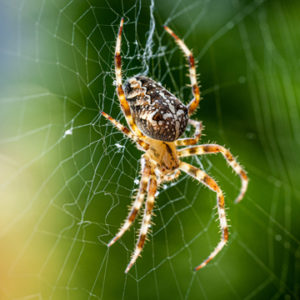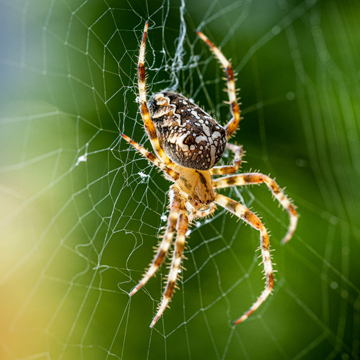 Serving Memphis, Cordova, Germantown & Collierville TN
Serving Memphis, Cordova, Germantown & Collierville TN
On our last blog, we talked about the ways that Hollywood has portrayed bugs as villains. We’ll conclude our review of villainous bugs this go around. AAA Termite & Pest Control is a business built around bugs. We have seen what these insidious evildoers do. That’s why we decided we should do our homework on the way pop culture has been infected by bugs.
Flies
Flies aren’t hard to kill necessarily, but they’re everywhere. It seems like once you have one, they can magically appear and buzz on and around your food just enough to make your belly turn. In films, they’ve been used as a plot device to set an evil tone for years. In a film made in 1958, then again redone in 1986, The Fly is a classic science fiction story that brings viewers to feel its fly-based fear. Successfully creating a matter teleportation device and not accounting for one small variable (a common housefly) makes for a story so well told and disturbing it’s been made twice with great success. A well-meaning scientist follows a passion that turns him from a man into a mutated hideous beast slowly before your eyes. Jeff Goldblum (1986) and Al Hedison (1958) show us exactly how revolting we see bugs as they are trapped into becoming one themselves. Flies are more disgusting than horrifying, but the next pest has a more troublesome reputation in pop culture.
Spiders
There are dozens of bugs we fear. No fear of any specific insect, however, is so common and so extreme as the fear of spiders—also known as arachnophobia. Alien spiders, giant spiders, and swarms of poisonous spiders have haunted our TV shows and movies for generations. Spiders can take form as the evil Dr. Smith (Gary Oldman) in Lost in Space, the 1998 family sci-fi adventure film based on the cult TV show. He is transformed into what you may refer to as an “alien were-spider” after being bitten by an alien spider deep in space. These alien spiders are really the antagonists of the whole film, as they’ve already destroyed another ship’s crew, and secretly claimed it as their spider nest when Smith and the other weary space travelers arrive. Science fiction has always had a way of using spiders to prey on our worst fears. The campy 2002 film Eight Legged Freaks, starring David Arquette, uses giant-sized spiders mixed with chemical waste to create a town-wide monster mash. Less scary and more disgusting, this movie uses spiders as a villainous threat, the likes of which a small coal-mining town has never seen. On the smaller side of things, spiders have never been more horrifying than in the cult-favorite movie Arachnophobia, which won multiple awards after its 1990 release. The reason spiders in this movie are considered so vile is because the plot is just plausible enough to be scary. A spider whose venom is deadly to humans kills a scientist on a research expedition. Unknowingly this spider is transported to the U.S., where it begins to reproduce, and its progeny continues a deadly killing spree. Jeff Daniels plays an arachnophobic family doctor Ross Jennings, whose worst fears become real.
Bug-like characters
Not all movies use one specific bug directly. However, many films and stories use bugs as inspiration or in clever ways. In the Harry Potter series, we see villainous spiders several times: the treacherous giant spider named Aragog, who lives in the Forbidden Forest, while Harry’s best friend Ron Weasley has to face his worst fear—yup, spiders–multiple times. In Tremors, worms and centipedes inspired the evil Graboids. Sci-Fi’s Aliens franchise uses terms like eco-skeleton, hive, and queen—all terms used to describe certain species of insects.
Keep these bad guy bugs out of your home
We hope you’ve enjoyed this look at villainous bugs from pop culture, but if your home becomes infested by insects or spiders, there’s nothing fun about it. Bugs quickly can overrun a home or business. Don’t let this happen to you. If you live in Memphis and Cordova, TN, call us at (901) 457-1117 to learn more about our services.

